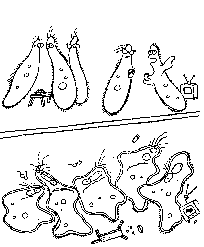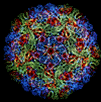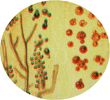| Bacteria |  |
|
![]()
| Readings | Presentations | Questions | Key Terms | Multiple Choice Quizzes | Updated 13/02/01 |
| The things taught in
colleges and schools are not an education, but the means of education Ralph Waldo Emerson |
 |
|
| Look out everyone its a coverslip |
Who am I?: I was awarded the Nobel Prize in 1984 for my theoretical studies on the immune system. I developed the concept that the thymus is the site where lymphocytes multiply differentiate and become functional T cells.
| Bacteria | |||
 |
Baron
Medical Microbiology Chap 3 Classification |
 |
Brock 9th Ed Biology of Microorganisms Chapt 13 Prokaryotic Diversity Bacteria |
| Tortora:
Microbiology An Introduction Chapt 11: Bacteria |
 |
Jacquelyn
Black 4th Ed Microbiology: Principles & Explorations Chap 9: An Introduction to Taxonomy The Bacteria |
|
| Presentation | Slides | Web Animation | Download |
| bacteria | |||
| phototrophs | |||
![]()
| DEFINE THE FOLLOWING KEY TERMS | ||
| Spirochetes | Axial Filament | Vibrio |
| Vibrioids | Enterics | Bacteriocins |
| serovars | Biovars | Rickettsias |
| Chlamydias | Mycoplasma | Staphylococcus |
| Streptococcus | Pseudomonas | Escherichia |
| Mycobacterium | Bacillus | Archaea |
| Chemoautotrophs | phototrophs | Cyanobacteria |
| Actinomycetes | elementary body | |
![]()